Scott Kazmir: The One That Shouldn’t Get Away
One step in our Offseason Plan process last month was a search for trade targets of a certain type: starting pitchers that, while good, were overpaid on existing contracts due to expire in 1-3 (ideally, two) years. Unless the D-backs payroll rises in a big way, there is a payroll crunch coming toward the end of the Contention Window, and yet the team really does have money to spend in the short term; we were hoping to find promising ways to upgrade the pitching staff using that advantage.
Ultimately, none of the 20+ pitchers we came up with in that process ended up looking like good ideas. Believe it or not, most of the pitchers on big contracts right now are still good enough to not be liabilities (e.g., Adam Wainwright, Gio Gonzalez), or just not very good (e.g., Matt Garza, Ubaldo Jimenez). The D-backs could still consider a project like Anibal Sanchez, but it’s tough to spend short-term money on an above-average starter, we found, at least right now. And yet, when we split off to run down the free agent list on our own, we both came back with an answer that fit as if he were that kind of trade target.
Scott Kazmir: A Short-term Option
Oh let the desert sun beat down upon my face, wins to fill my dream
Kaz works the zone in both time and space, to be where we have been
Front office elders come to embrace, Chase Field has seldom seen
Contention Window’s here, no more sit and wait
All will be revealed
At MLBTradeRumors, Tim Dierkes pegged a 4 year, $52M deal ($13M AAV) for Scott Kazmir. The average of the crowd at FanGraphs was 3.3 years at $47.8M ($14.6M AAV), while the median of those responses was 3 years, $42M ($14M AAV).
In the Plan, Jeff and I included a 2 year, $32M offer to Kazmir, a shorter duration but at a significantly higher AAV ($16M). Much higher. And I tend to think he makes a ton of sense at 2 years, $36M ($18M AAV), or even 3 years, $51M ($17M AAV), or 3 years, $46.5M ($15.5M AAV) if the deal could be fairly frontloaded instead of the normal slight backloading. That’s a ton of money for a pitcher who probably isn’t an ace, but in a way, his record really isn’t all that different from that of Jordan Zimmermann, who got 5 years and $115M from the Tigers ($23M AAV), and with the David Price signing yesterday (7 years, $217M, $31M AAV), it’s now possible for a pitcher other than the best pitcher on the planet to make more than $30M a season. Oh, and for what it’s worth, Dan Szymborski turned ZiPS projections into dollar values for ESPN Insider, and found Kazmir to be worth an average of $17.5M per season in terms of on-field value for the next four years.
As a solid but less-than-ace pitcher, Esteban Loaiza got a 3 year, $21.4M contract ($7.13M AAV) from the Athletics 10 years and three days ago. It was a deal that caused a good deal of resentment towards Oakland GM Billy Beane: why would one purposefully inflate the market for #3 starter types? But even a mediocre bet like the one the Loaiza contract turned out to be isn’t so big a deal if it’s just three years. And those guys aren’t too easy to acquire, as the Red Sox found out in parting with three players to grab Wade Miley a year ago.
Loaiza was coming off a 3.77 ERA season when he signed that contract; Kazmir happens to be projected by Steamer to finish with a 3.77 ERA next season. That’s not an ace number, and that’s not where we expect a guy on the ace bubble like Patrick Corbin to finish, either. Steamer projects a 2.8 WAR total for Kazmir, assuming 200 innings; if the team really does need about 15 WAR from its starters next season, that total would be helpful, but only if it came in lieu of a worse performance. Still — the D-backs are stuffed to the gills with #4-#5 starter candidates, with only Corbin slated to do better than a #3 and only Robbie Ray seemingly capable of providing a mid-rotation total of about 3 WAR. Kazmir can help, if 2.8 WAR is something he can provide.
It may not be. Kazmir’s last three seasons:
You could look at this and reasonably guess that Kazmir was more of a #4 starter that lucked his way into an especially strong season — for starters throwing a full season, we don’t often see a BABIP more than 10 or 15 points off of the league average (Johnny Cueto being one of the biggest exceptions), which tends to be within a couple points of .300. It may be that Kazmir really was lucky; SIERA is one of the most nuanced ERA estimators around, and there was very little about Kazmir’s game that looked special in terms of component stats. He didn’t strike out enough guys for their benefit to stack; he wasn’t so great at avoiding walks that the walks he did allow were less harmful than normal; and his batted ball profile was middle of the road. Kazmir did avoid line drives (19.8% LD%, better than the average, around 21% or 22%), but although he was better than average at that in 2014 as well, LD% is one of the least stable pitching statistics.
Kazmir’s Stuff
As noted in the Offseason Plan, we know from 2009-2011 that Kazmir isn’t a very good pitcher with diminished velocity. Still, he’s evolved more than once — and with a cutter and curve now occasional parts of his arsenal, he might be better equipped to handle a slip in velocity (which is back to where it was in his greener days — about as amazing as the fact that he recovered any velocity at all). Even the movement of his pitches has evolved, from 2007 (arguably Kazmir’s best season, but also his first PITCHf/x season), to his fall from grace mostly in 2010, to his re-emergence with Cleveland in 2013 and what he’s done most recently (and 2014 and 2015 were nearly identical in terms of average movement).
More tools that actually work mean more ways to get guys out. And in the last two seasons in particular, Kazmir had a lot more success against right-handed hitters than he’d enjoyed in the past — to the point of reverse platoon splits:
Kazmir did not do nearly as well with the Astros as he had with Oakland from the beginning of the 2014 season through an 8.1 inning, 1 ER start on July 18 of this year. Compare how he pitched lefties in his he’s-back-but-not-dominant 2013 season with the Indians to how he pitched with the Athletics in 2014:
Against righties, Kazmir went away from the sinker-heavy approach that featured fastballs almost two thirds of the time (bottom right) to an approach that featured his cutter and off-speed offerings much more (top right) — especially his change. And his changeup actually was more effective (.245 BAA in 2013, .191 BAA in 2014) against righties; his cutter also was more effective (.269 BAA in 2013, .226 BAA in 2012). All of his pitches had more success against righties, except for the curve, which he threw more often but still only 5.7% of the time.
Just as Kazmir took a changeup approach against RHH and made it even more reliant on changeups, he took a slider-centric approach against LHH and doubled down on that, too. The slider weathered that storm, with batting average rising only from .159 to .180 — much better than the other two pitches he threw frequently to LHH (four-seam, .326; sinker, .444). And a lack of success with his sinker against lefties seems to be to blame for lefties’ greater success in general. In 2015, Kazmir backed off the slider quite a bit against lefties (from 37.8% to 27.3%), and the sinker fared much better once again (.205 BAA), but the slider was then less successful (.267 BAA).
From ESPN Stats & Info, it looks like Kazmir also ended up in the inside part of the strike zone more often in 2014 and 2015 than he did in 2013, and that he bailed on pitching high in the zone in favor of moving low and away (which fits the slider-heavy approach). Abandoning high in the zone and bleeding inside might also explain the rise in BAA — and that could be something he could possibly do differently.
Kazmir’s curveball is little more than a show-me pitch, but while his change may always be the key to his RHH approach, his cutter — which has only been featured by Kazmir 2.0 — is also key to his success. As he’s featured it more, his four-seam has also become more effective against RHH — and so long as his sinker stays helpful, this four-seam/sinker/cutter/change approach against righties looks like it has staying power. It’s a formula that took a while to perfect, but there’s no reason to suspect it can’t stay successful.
A D-backs Fit
Oh, pitchers of a staff that leaves no trace, like thoughts, a better scheme
Heed the path that led me to that place, a more left-handed team
My Shangri-La be coming ever soon, contention comes again
Sure as haboobs that float high in June, we’re movin’ toward Kazmir.
In the last few seasons, most D-backs starting pitchers have seemed to fail to live up to expectations. The list goes on: Trevor Cahill, Randall Delgado, Wade Miley, Josh Collmenter, Rubby De La Rosa, Jeremy Hellickson, and maybe most notably, Ian Kennedy and Brandon McCarthy. Not sure I’d put Chase Anderson in the same category, but maybe you would.
Still, a couple of pitchers beat expectations with the D-backs, and seemed to tap into their potential: Patrick Corbin, and Robbie Ray.
Simple observation: every pitcher in the first list throws right-handed. Corbin and Ray are both left-handed. Coincidence? Maybe. And maybe it’s this:
We saw the Dodgers stack the lineup with lefties when facing RDLR, with great success (for the Dodgers) — but the only NL West rivals to have had more success last year against LHP than against RHP were those Dodgers. The difference for the Giants and Padres were slight (though for a whole team over a whole season, those differences are significant), but holy hell did the Rockies have a tough time with lefties this year.
The unbalanced schedule makes the division matter more than other teams in the league, but it’s worth noting that after the Dodgers and Giants, only the Nationals (106 wRC+), Mets (102 wRC+) and Marlins (100 wRC+) created runs against lefties at a league average clip or better (and none of those rates are especially great). The National League in general has a 91 wRC+ against lefties, a fair bit worse than its 95 wRC+ against RHP. And against RHP, success is more heavily stacked in the NL West.
Whether Kazmir can take advantage of that discrepancy if he keeps up a reverse platoon split is anyone’s guess, but there’s another thing that might explain the difference between the track records of recently-disappointing pitchers and Corbin and Ray. Broadly speaking, I think the D-backs have done less to mess with the approaches of Corbin and Ray than they have with Delgado, Collmenter, RDLR and Hellickson. The team famously took McCarthy’s cutter away from him, and when they moved to have Anderson start throwing his sinker more, he had less success. Maybe that’s it? If so, that’s something the D-backs have a lot of control over.
The D-backs opened the 2015 season with an all-righty rotation, and if they sign Kazmir, they may open 2016 with three southpaws leading the rotation. I’m feeling okay with that. Sorry, Rockies. Kazmir seems like a strong option, one that fits the Contention Window and the payroll outlook. Just as Corbin and Ray seemed to get a pass on the Ground Ball Movement (other than Ray adding a sinker), Kazmir may end up pitching better if he gets the green light to keep doing what he’s doing.
A staff savior? No. But he’d be unlikely to be the worst starter in the rotation, either, and he’d be likely to be a fair bit better than the pitcher he replaces. And considering there’s now a $30M or so gap between the current payroll and the one the team had on Opening Day in 2015, there could be room to add him — and add another pitching option as good or better, without betting the long-term viability of the franchise. The D-backs showed a willingness to strike fast in making a 6-year, $120M offer to Johnny Cueto sometime in November. Here’s hoping they don’t miss an opportunity with Kazmir, as there really isn’t any pitcher available who fits the team and the situation any better.
Let him take us there. Let him take us there.
6 Responses to Scott Kazmir: The One That Shouldn’t Get Away
Leave a Reply Cancel reply
Recent Posts
@ryanpmorrison
 Congrats to @OutfieldGrass24 on a beautiful life, wedding and wife. He deserves all of it (they both do). And I cou… https://t.co/JzJtQ7TgdJ, Jul 23
Congrats to @OutfieldGrass24 on a beautiful life, wedding and wife. He deserves all of it (they both do). And I cou… https://t.co/JzJtQ7TgdJ, Jul 23 Best part of Peralta’s 108 mph fliner over the fence, IMHO: that he got that much leverage despite scooping it out… https://t.co/ivBrl76adF, Apr 08
Best part of Peralta’s 108 mph fliner over the fence, IMHO: that he got that much leverage despite scooping it out… https://t.co/ivBrl76adF, Apr 08 RT @OutfieldGrass24: If you're bored of watching Patrick Corbin get dudes out, you can check out my latest for @TheAthleticAZ. https://t.co/k1DymgY7zO, Apr 04
RT @OutfieldGrass24: If you're bored of watching Patrick Corbin get dudes out, you can check out my latest for @TheAthleticAZ. https://t.co/k1DymgY7zO, Apr 04 Of course, they may have overtaken the league lead for outs on the bases just now, also...
But in 2017, Arizona ha… https://t.co/38MBrr2D4b, Apr 04
Of course, they may have overtaken the league lead for outs on the bases just now, also...
But in 2017, Arizona ha… https://t.co/38MBrr2D4b, Apr 04 Prior to the games today, there had only been 5 steals of 3rd this season (and no CS) in the National League. The… https://t.co/gVVL84vPQ5, Apr 04
Prior to the games today, there had only been 5 steals of 3rd this season (and no CS) in the National League. The… https://t.co/gVVL84vPQ5, Apr 04
Powered by: Web Designers@outfieldgrass24
 Starting 2022 with a frigid dog walk sounds just lovely https://t.co/xoLZSZBpGp, Jan 01
Starting 2022 with a frigid dog walk sounds just lovely https://t.co/xoLZSZBpGp, Jan 01 I’ll never forget seeing Kyle Seager at the Scottsdale Fashion Square one March with his family and thinking “damn,… https://t.co/uapNYdsU2a, Dec 30
I’ll never forget seeing Kyle Seager at the Scottsdale Fashion Square one March with his family and thinking “damn,… https://t.co/uapNYdsU2a, Dec 30 Big dogs. Bigger trees. @ Avenue of the Giants, Nor Cal https://t.co/YAdxcE1t1p, Dec 29
Big dogs. Bigger trees. @ Avenue of the Giants, Nor Cal https://t.co/YAdxcE1t1p, Dec 29 Old friend alert https://t.co/7HQjiyBWTB, Dec 27
Old friend alert https://t.co/7HQjiyBWTB, Dec 27 Death wish https://t.co/XJzcMkNPTy, Dec 26
Death wish https://t.co/XJzcMkNPTy, Dec 26
Powered by: Web Designers


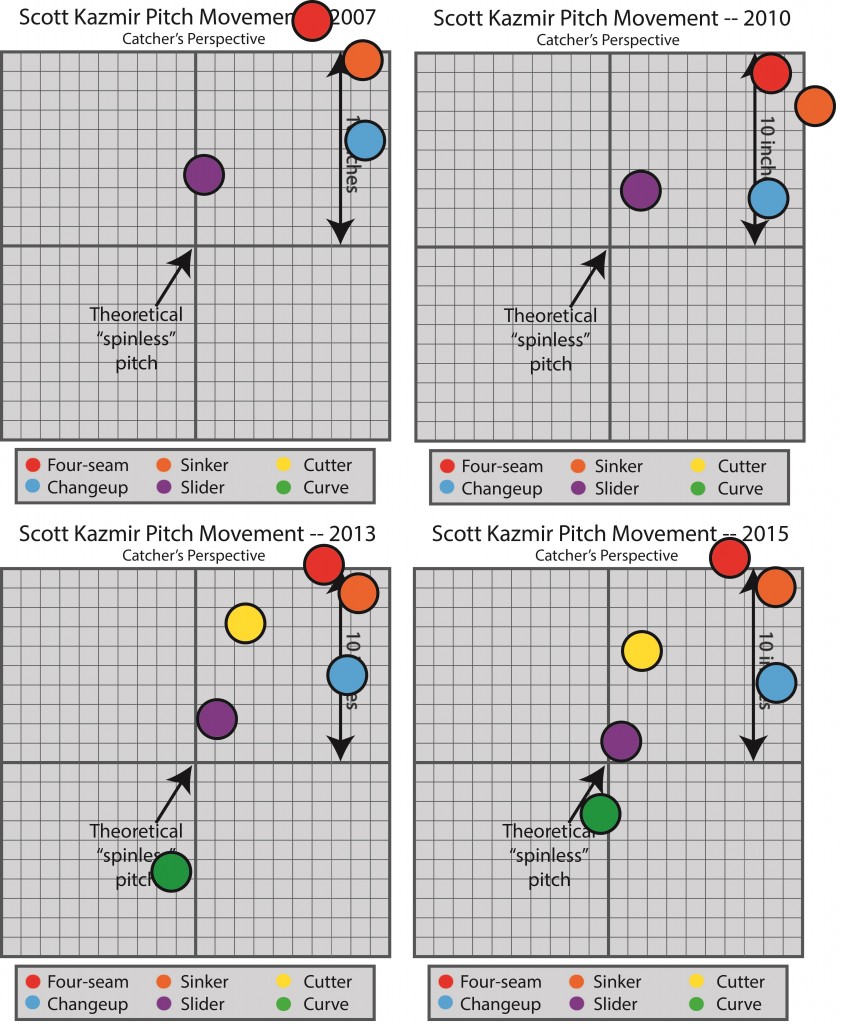
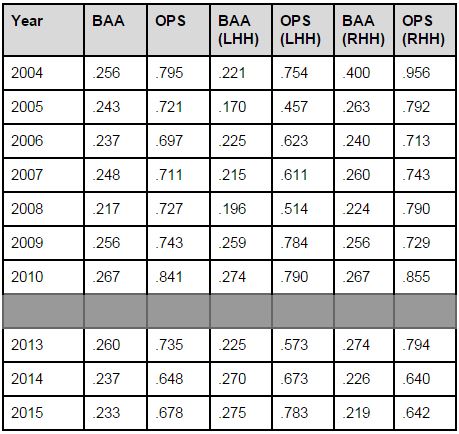
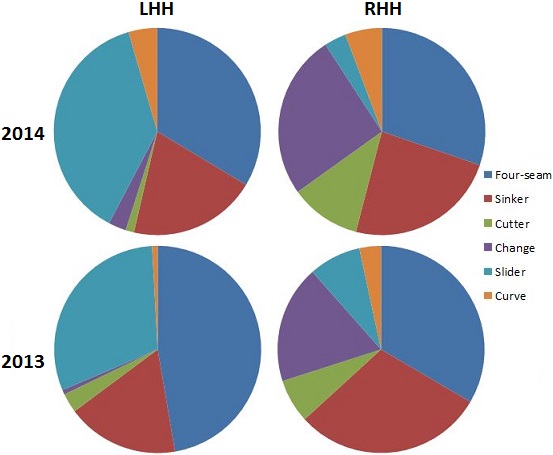
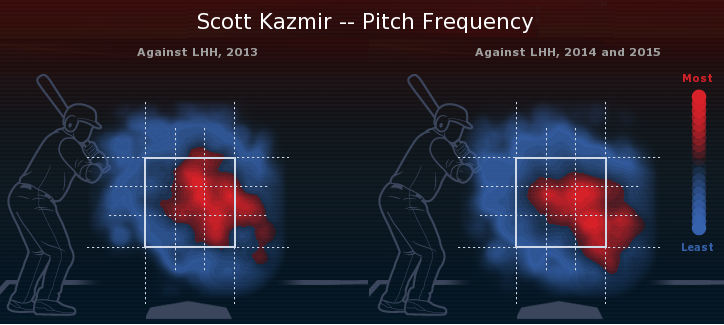
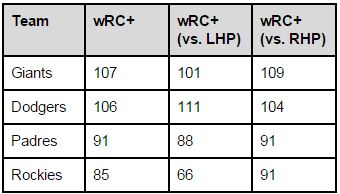




The upcoming payroll crunch is one of the more unpalatable things about the Tomas contract. Granted, even if he starts earning every penny and then some, the money is still spent, but then that sort of performance makes the money crunch less severe as performance is already elevated. Though, if he is performing that well, he opts out and the team has his hefty sum freed up.
Realistically, there is simply no way this team can continue to operate at or below $100 million payroll if it wants to retain any meaningful talent. Even Goldscmidt’s insanely friendly contract eats up more than 10% of that all by itself once 2018 rolls around. So team-friendly contracts are not going to do the trick all by themselves. Eventually, this team is going to need to start spending a bit more liberally. Even if payroll only increases by $5-7 million per year for the next 4-5 years, that will make a massive difference, while being only a small boost in overall money spent.
Of course, I also think that if Corbin is not extended next winter, he will become a prime trade target, specifically to avoid his getting expensive. I think the same might wind up holding true for Pollock, making sure both are traded with at least one full year of control left in order to maximize the return. I don’t necessarily support this idea, but it certainly seems like something that this organization would do.
Throwing this out as food for thought.
I’d rather see the team make an offer to Cueto that he can’t refuse ($150/6 ?) and then trade A.J. Pollock and a pitching prospect (Bradley or Shipley) to Oakland for Sonny Gray and a throw-in prospect. The oft-injured Coco Crisp, at age 36 will be in his last year for the A’s and Billy Beane might be swayed by Pollock. Gray has a 10.3 WAR and Pollock has a 10.3 oWar, so I don’t see any lost value. This gives the Dbacks the two TOR starters they need while keeping the payroll expenditure well under $40M/yr and puts them in contention with the Dodgers and Giants for the NL West pennant. Of course, the loser in the Greinke pursuit might certainly bid for Cueto and that is why the Dbacks need to make an offer Cueto can’t refuse. A rotation of Gray, Cueto, Corbin, Ray, and Blair would certainly be young (25.6), relatively inexpensive in the contention years, and formidable.
I know many believe the Dbacks will be players for Kenta Maeda but as I have opined before, I just don’t see Maeda signing with a team that has roughly less than 5000 Japanese residents in a metro area greater than 4.4 million residents Culture will weigh heavily given similar financial incentives.
As for the trade, I fully realize Pollock is poised to become one of the elite OF in MLB, however he may have reached peak value for the Dbacks at age 28 entering the 2016 season.. Additionally, we have Inciarte to handle CF who has a similar dWar to Pollock. I would call up Brito to platoon with Tomás in RF with Peralta in LF to complete the OF.
On the topic of free agents, I saw that Tyler Flowers was non-tendered by the White Sox. Given our black hole of catching depth and Tuffy’s realistic return date more likely mid-season than April, does it make sense to take a run at Flowers? He would be a substantial upgrade at framing and might be had for 2yrs $6-8mm? That fits the window and addresses our biggest hole other than starting pitching.
The Diamondbacks have already repeatedly passed on better backup options than Chris Hermann. II wouldn’t mind seeing Flowers back there, but it seems that the team is sold on Hermann actually sticking around back there instead.
How does this conversation change now in light of the Greinke deal? If we can swing some of our spare parts (BOR starters and middle infielders and Tomas) for another TOR starter or elite reliever that’d be awesome.
[…] and thinner thanks to a not-inconsequential elevation. And part of why we we thought Scott Kazmir seemed like a promising acquisition target is that he throws left-handed — over the last few seasons, the pitchers who have beaten […]